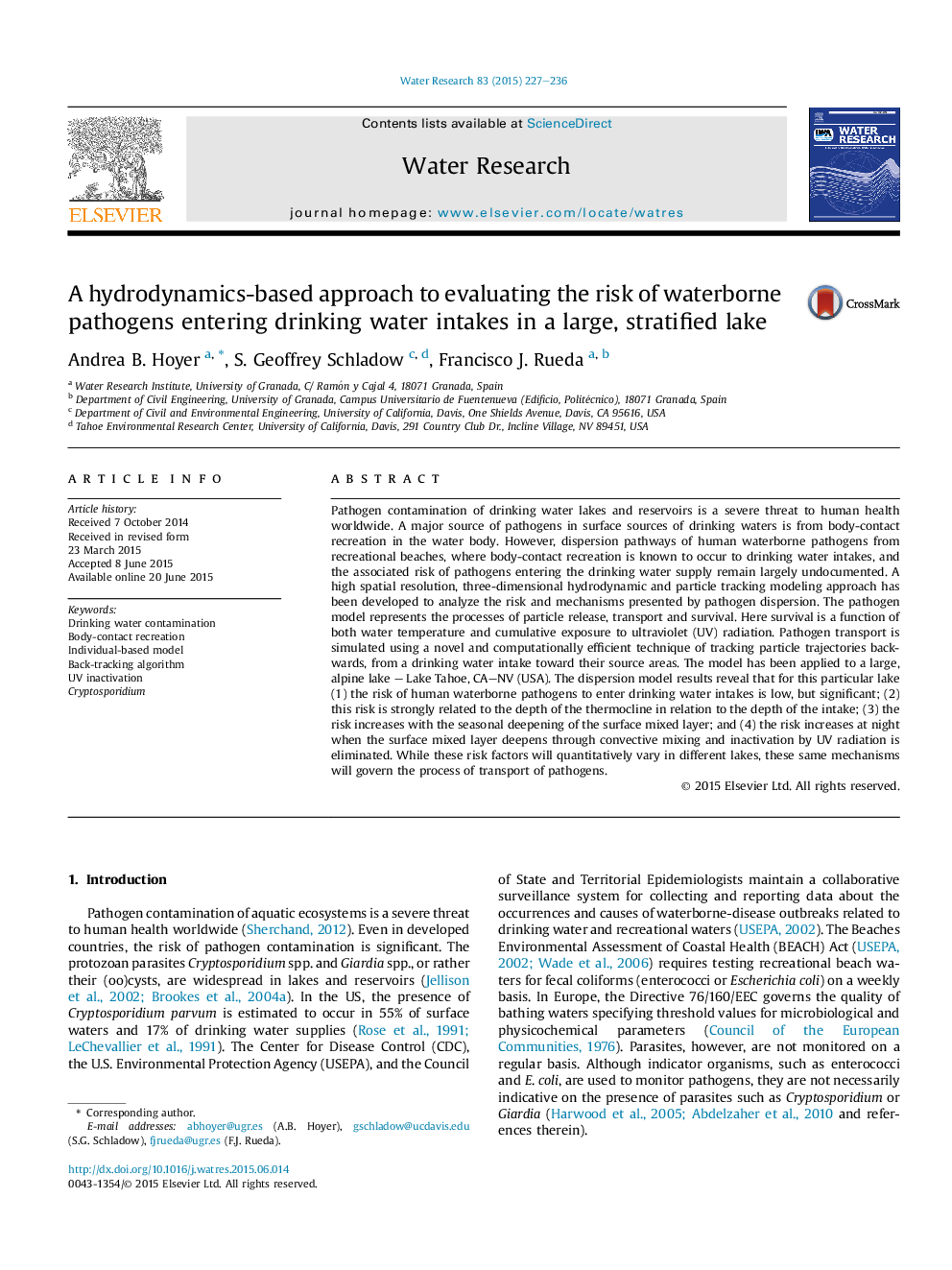| کد مقاله | کد نشریه | سال انتشار | مقاله انگلیسی | نسخه تمام متن |
|---|---|---|---|---|
| 6365766 | 1623085 | 2015 | 10 صفحه PDF | دانلود رایگان |
عنوان انگلیسی مقاله ISI
A hydrodynamics-based approach to evaluating the risk of waterborne pathogens entering drinking water intakes in a large, stratified lake
ترجمه فارسی عنوان
یک رویکرد مبتنی بر هیدرودینامیک برای ارزیابی خطر ابتلا به پاتوژن های آب در ورود به آب آشامیدنی در یک دریاچه بزرگ و طبقه بندی شده
دانلود مقاله + سفارش ترجمه
دانلود مقاله ISI انگلیسی
رایگان برای ایرانیان
کلمات کلیدی
موضوعات مرتبط
مهندسی و علوم پایه
علوم زمین و سیارات
فرآیندهای سطح زمین
چکیده انگلیسی
Pathogen contamination of drinking water lakes and reservoirs is a severe threat to human health worldwide. A major source of pathogens in surface sources of drinking waters is from body-contact recreation in the water body. However, dispersion pathways of human waterborne pathogens from recreational beaches, where body-contact recreation is known to occur to drinking water intakes, and the associated risk of pathogens entering the drinking water supply remain largely undocumented. A high spatial resolution, three-dimensional hydrodynamic and particle tracking modeling approach has been developed to analyze the risk and mechanisms presented by pathogen dispersion. The pathogen model represents the processes of particle release, transport and survival. Here survival is a function of both water temperature and cumulative exposure to ultraviolet (UV) radiation. Pathogen transport is simulated using a novel and computationally efficient technique of tracking particle trajectories backwards, from a drinking water intake toward their source areas. The model has been applied to a large, alpine lake - Lake Tahoe, CA-NV (USA). The dispersion model results reveal that for this particular lake (1) the risk of human waterborne pathogens to enter drinking water intakes is low, but significant; (2) this risk is strongly related to the depth of the thermocline in relation to the depth of the intake; (3) the risk increases with the seasonal deepening of the surface mixed layer; and (4) the risk increases at night when the surface mixed layer deepens through convective mixing and inactivation by UV radiation is eliminated. While these risk factors will quantitatively vary in different lakes, these same mechanisms will govern the process of transport of pathogens.
ناشر
Database: Elsevier - ScienceDirect (ساینس دایرکت)
Journal: Water Research - Volume 83, 15 October 2015, Pages 227-236
Journal: Water Research - Volume 83, 15 October 2015, Pages 227-236
نویسندگان
Andrea B. Hoyer, S. Geoffrey Schladow, Francisco J. Rueda,
